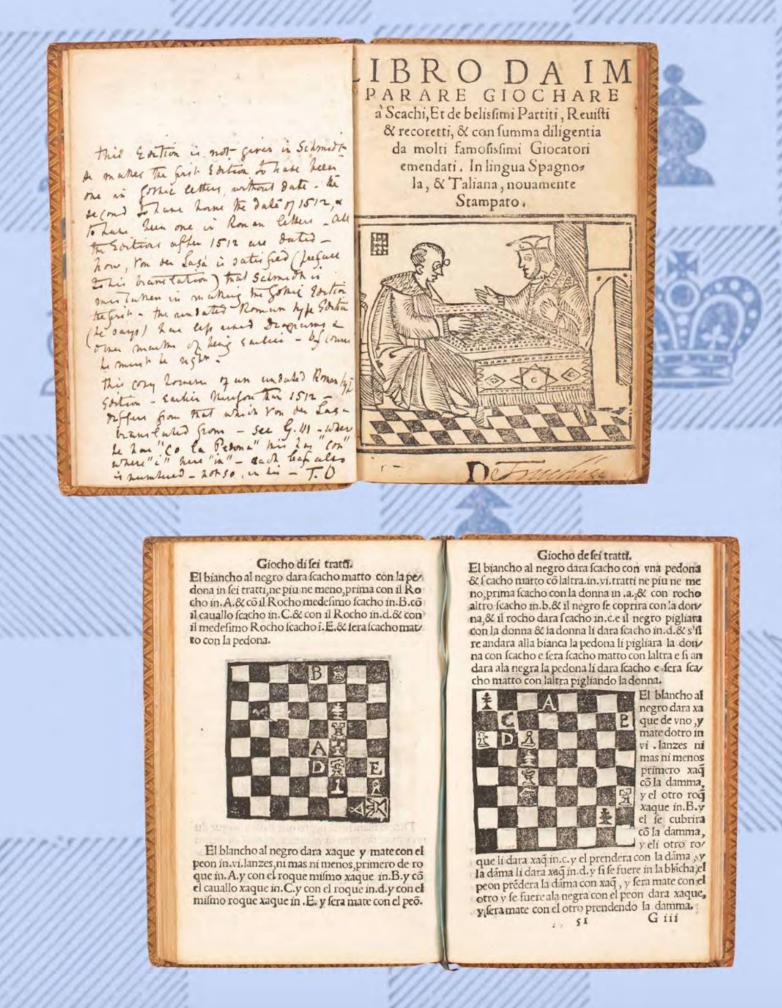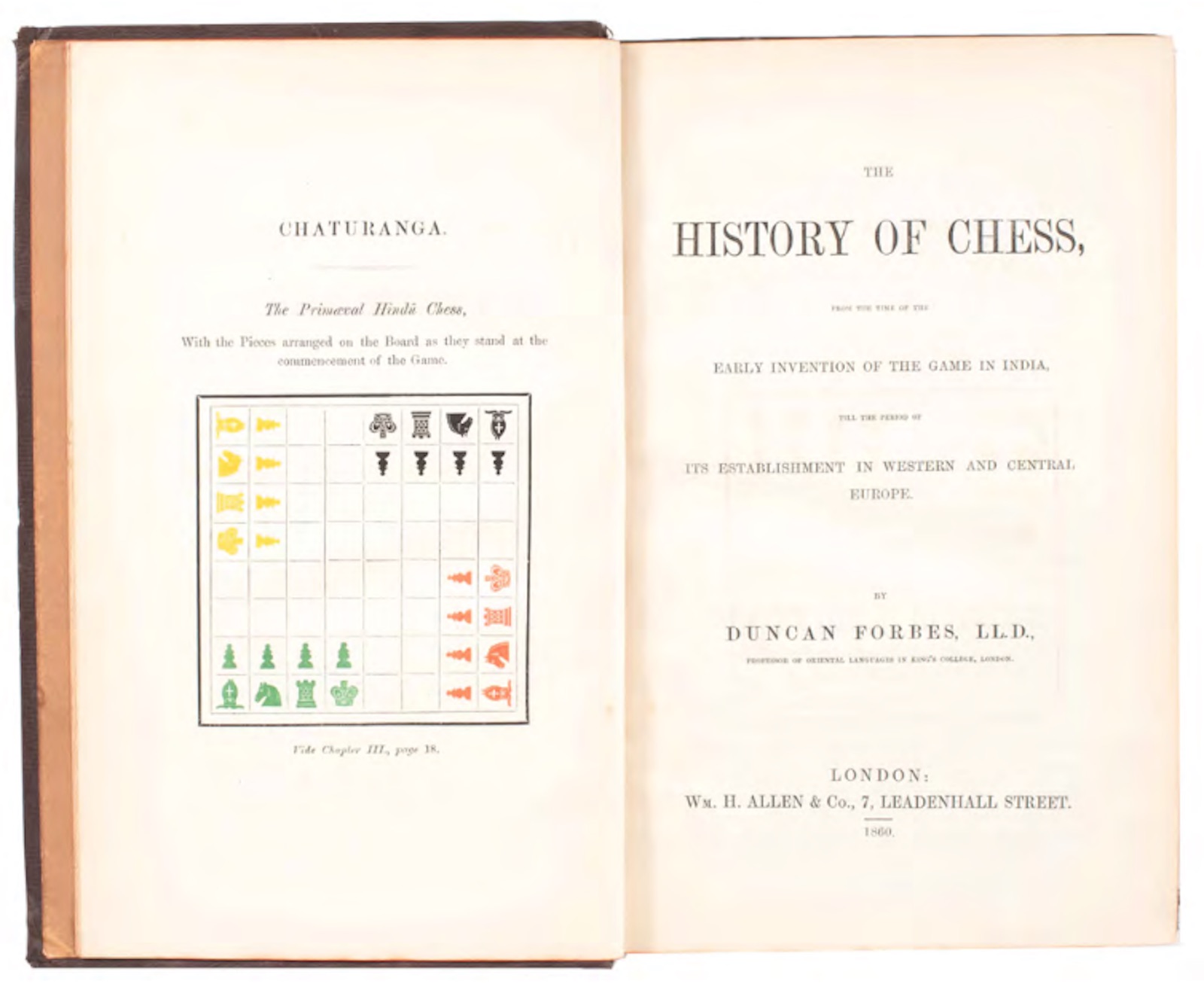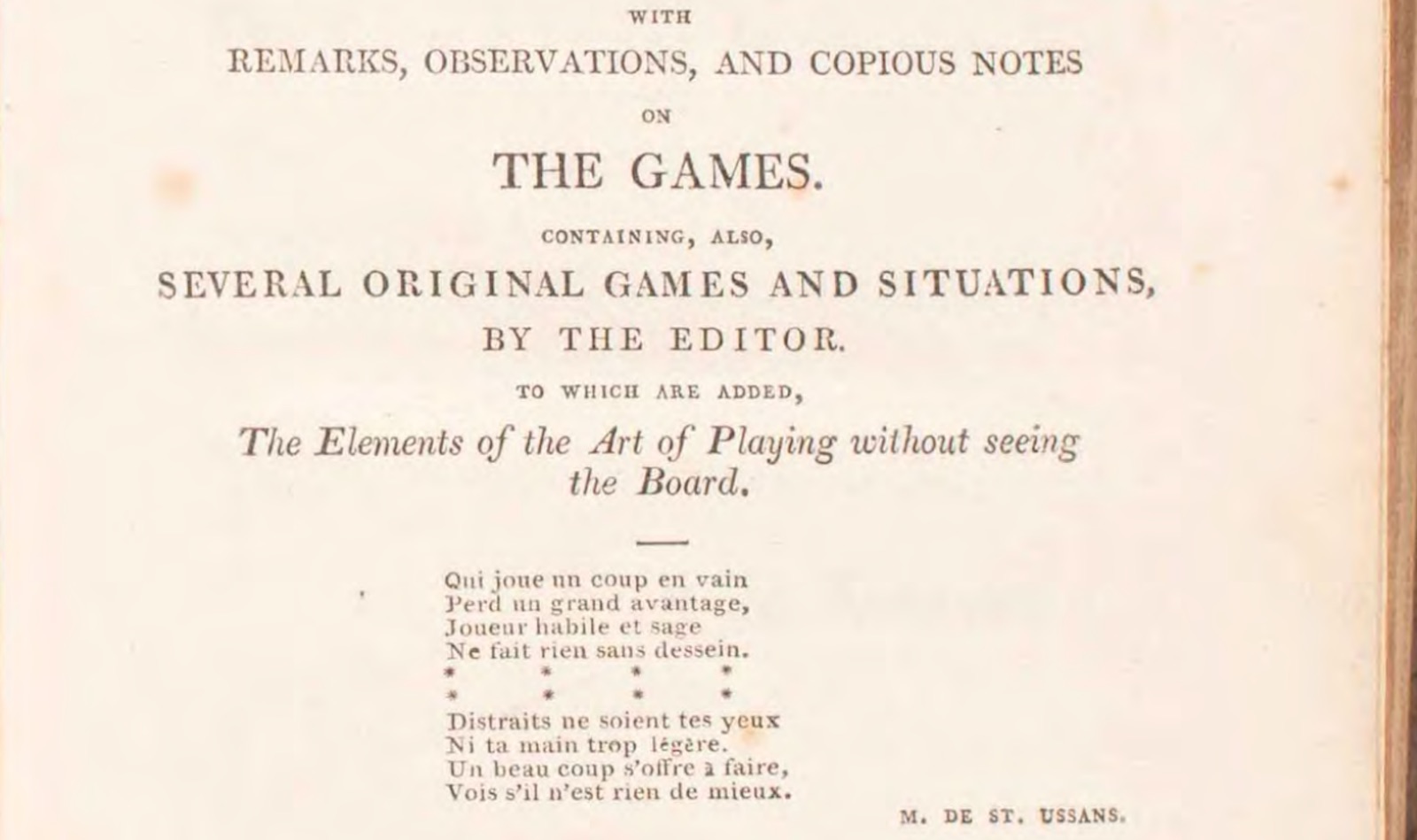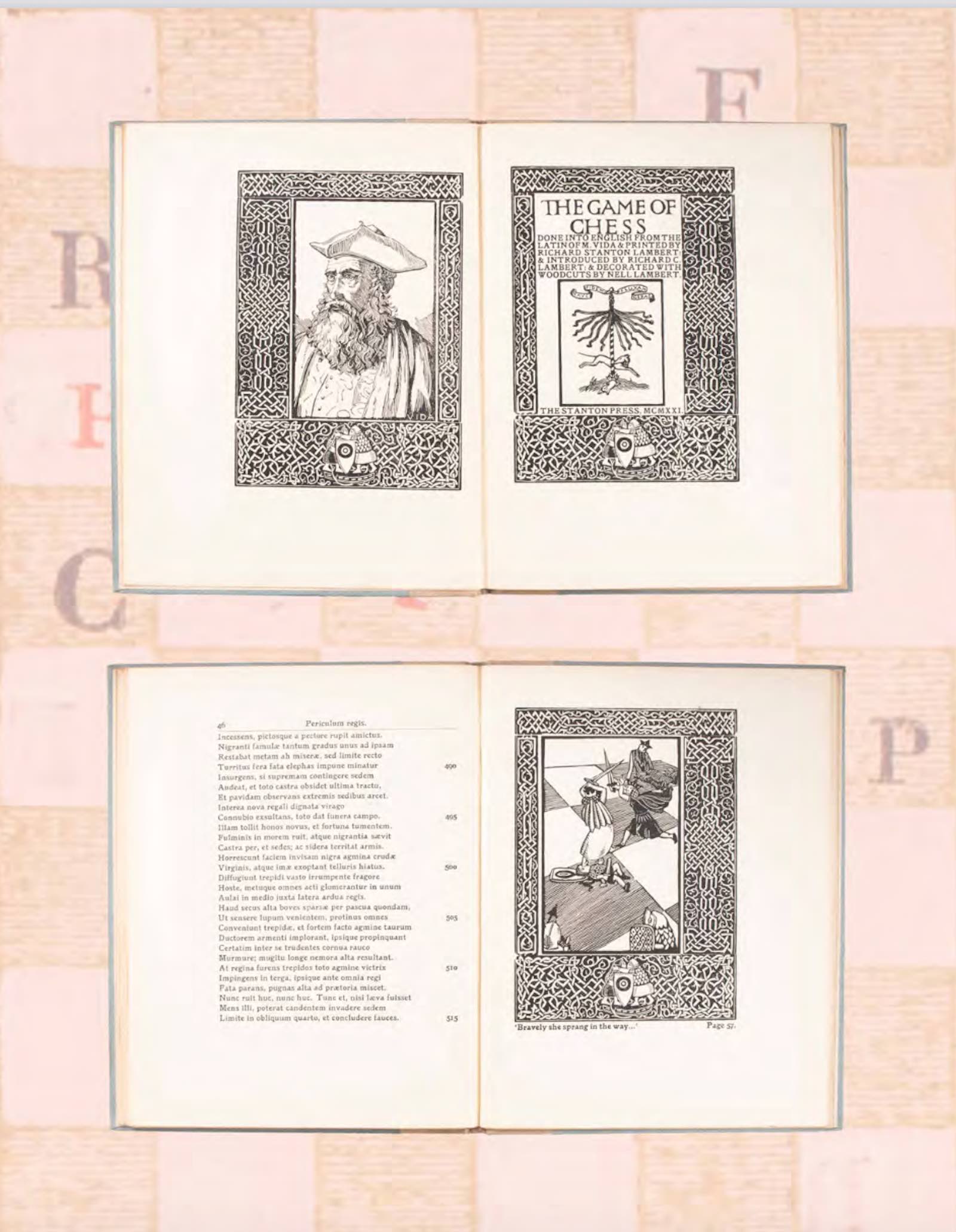* The history of chess by Duncan Forbes, first edition, 1860. Forbes (1798–1868) was professor of oriental languages at King’s College London, and compiled a catalogue of the Persian manuscripts in the British Museum.
* Chess for beginners by William Lewis, 1835. First edition of this chess manual by the proprietor of a chess school in London. Lewis (1787–1870) was the operator hidden inside William de Kempelen’s chess automaton the Terrible Turk.
* The works of Damiano, Ruy-Lopez and Salvio, on the game of chess by Jacob Henry Sarratt, 1813. Includes “the elements of the art of playing without seeing the board.”
* The game of chess by Marco Girolamo Vida, translated into English from the Latin by Richard Stanton Lambert, 1921. First edition of this translation of Vida’s Scacchia ludus, the most famous poem in chess literature.




















